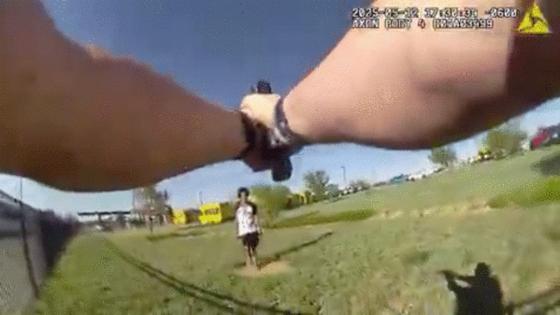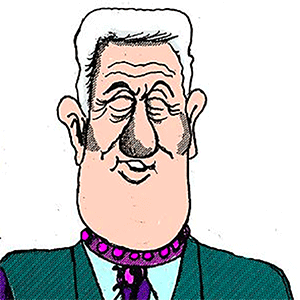Family sues Colorado police officer who killed unarmed Black man after tussle
Published in News & Features
DENVER — The family of an unarmed Black man who was shot and killed by an Aurora police officer as he walked toward the officer after a physical altercation has sued the police officer.
Aurora police Officer Brandon Mills shot and killed Rashaud Johnson, 32, on May 12 in a private parking lot near Denver International Airport, according to the lawsuit and the Aurora Police Department.
Mills shot Johnson, who was unarmed, as Johnson walked toward him with his hands at his side, about 45 seconds after the end of a physical alteration in which both the officer and Johnson tussled the ground, body-worn camera footage shows. They were separated by about 15 feet when Mills fired, the lawsuit, which was filed Monday, claims.
The lawsuit alleges that Johnson, who lived about a half mile away from the parking lot, was in the midst of a mental health crisis and that Mills never should have fired his gun.
“Someone who thought they were God, basically, took my baby’s life,” Taushica Carter, Johnson’s mother, said during a Tuesday news conference with her attorneys at the Denver offices of law firm Rathod Mohamedbhai.
Aurora police Chief Todd Chamberlain said in May that the officer tried to deescalate the situation before shooting Johnson, who was suspected of trespassing.
“The absence of a weapon does not mean that there is an absence of danger by any stretch of the imagination,” the chief said during a May news conference.
On May 12, Johnson had been walking barefoot around The Parking Spot at 19901 E. 56th Ave. for more than two hours when Mills arrived in response to repeated 911 calls from parking lot employees, who reported that Johnson seemed to be under the influence of drugs, that he was walking around the lot pulling on car doors, and, eventually, that he tried to fight employees.
Mills arrived at 5:27 p.m. and approached Johnson, who did not respond to the officer’s questions, according to body-worn camera footage of the incident. Within 90 seconds, Mills told Johnson he needed to leave, and Johnson rushed toward the officer.
Mills retreated and pushed Johnson away. Johnson continued to advance on the officer, with his hands at his side. Mills pulled out a baton and continued to retreat. Johnson jogged after the officer, who then fired a Taser at Johnson. Johnson ran at the officer and the two of them fell to the ground.
A tussle that lasted about 45 seconds ensued, body-worn camera footage showed. Johnson grabbed the officer’s spare ammunition magazine during the altercation, and the officer called out to a bystander for help.
“Hey man, help me!” Mills shouted. The bystander did not physically intervene but did alert a 911 dispatcher to the tussle.
The officer broke away from Johnson, backed up and drew his gun. Johnson stood in place and did not react when the officer ordered him to get on the ground.
About 45 seconds after the end of the physical altercation, Johnson walked toward the officer again.
Mills shot Johnson as the man walked steadily toward the officer with his arms at his side. Johnson was about 15 feet away from the officer when Mills shot Johnson in the abdomen and in the heart. Johnson fell and did not recover.
Mills held the collapsed Johnson at gunpoint and did not help the man after the shooting for more than five minutes, the body-worn camera footage shows.
The officer was placed on paid administrative leave after the shooting while it is under investigation. Chamberlain said during a police news conference in May that Mills shot Johnson when Johnson started “to charge toward our exhausted officer once again.” The body-worn camera footage shows Johnson was walking when he was shot.
Chris Hopper, a spokesman for 17th Judicial District Attorney Brian Mason, said Tuesday that the completed investigation was presented to the district attorney’s office recently, and that prosecutors are now considering whether the officer’s actions were criminal or justified by law.
The entire encounter before Mills shot Johnson lasted less than four minutes, the camera footage shows.
Johnson had marijuana in his system at the time he was killed, an autopsy found. He was cited in 2013 for reckless driving and for consuming marijuana in public, court records show, but had no other criminal charges in Colorado.
His parents on Tuesday objected to the way the Aurora Police Department has portrayed Johnson since the shooting.
“They tried to paint a picture as though this was a wayward person, or a troubled person — and he wasn’t,” said his father, Christopher Johnson.
They said he had not exhibited any unusual behavior before the May 12 and that noted that he has always “moved at his own pace.”
“What others would see as unresponsive, we would see as normal,” Christopher Johnson said. “Let’s say he is interested in something — he would hear what you are saying and take that, and maybe for you take a long pause. He’d answer you, but it would be in his time.”
The lawsuit describes Johnson as a budding comedian who was close with his family, thoughtful and introspective. He was generous and respectful, his parents said in the complaint.
_____
©2025 MediaNews Group, Inc. Visit at denverpost.com. Distributed by Tribune Content Agency, LLC.







Comments